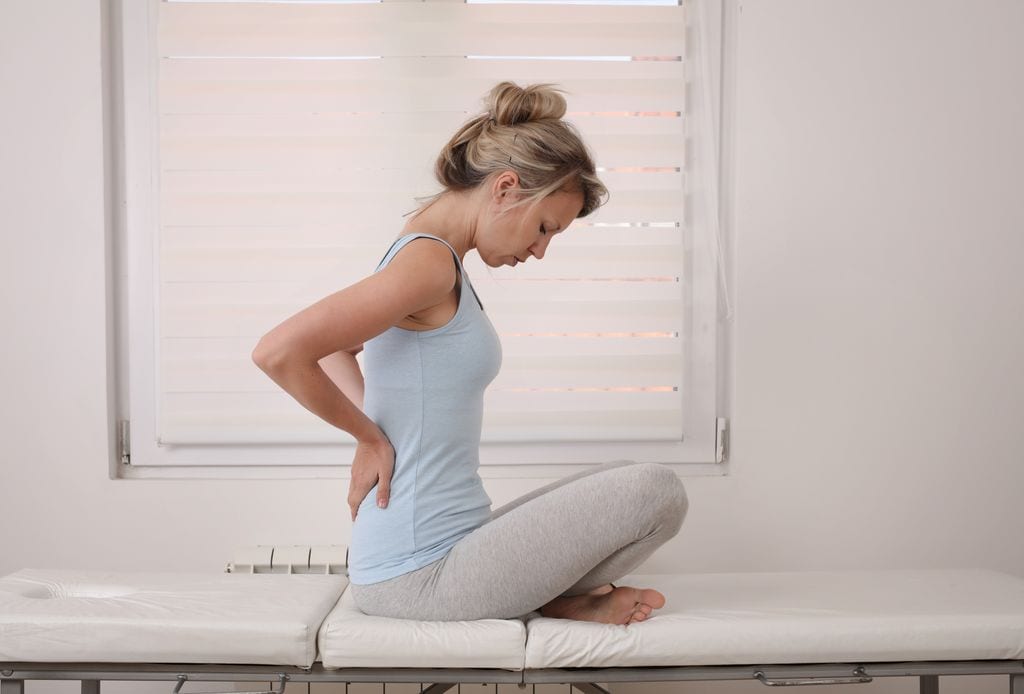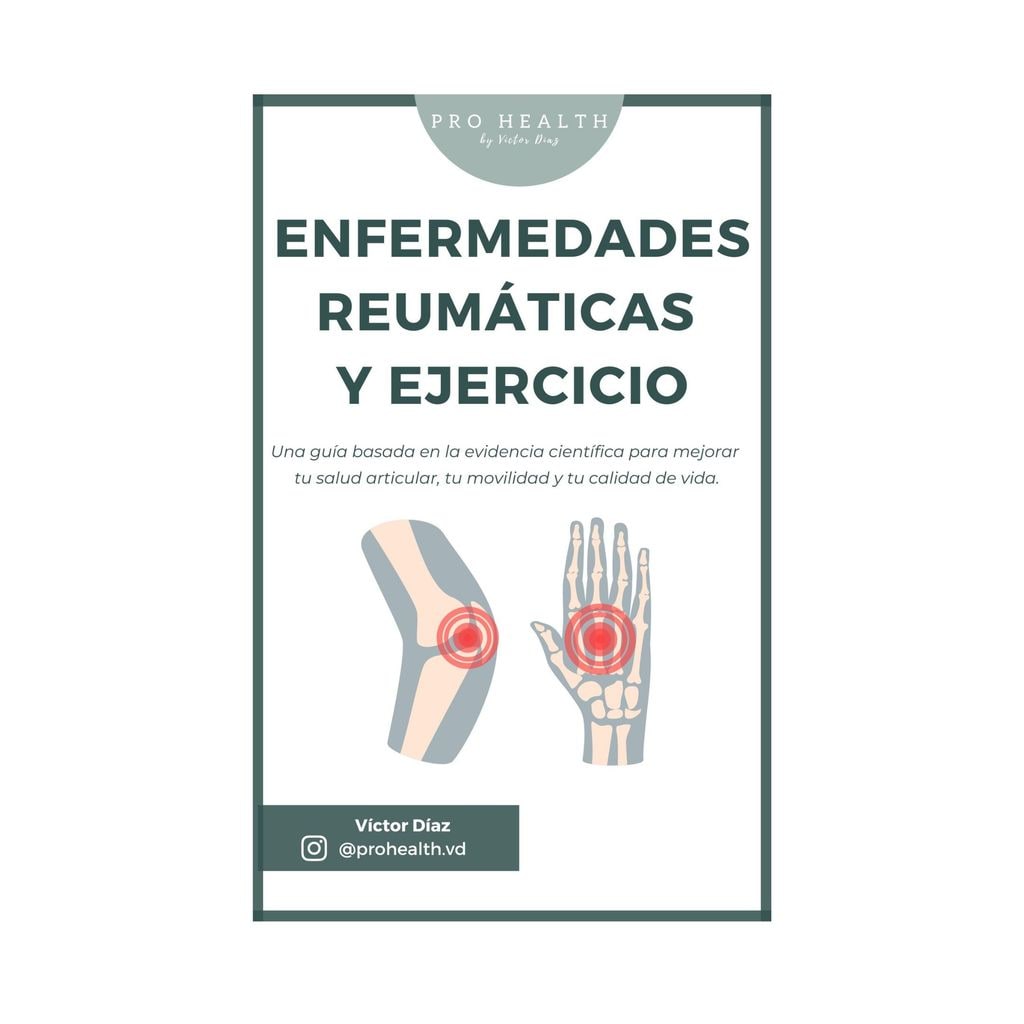The experts are clear: Exercise is a great ally for patients with rheumatic diseases. And we are not facing a minor problem, since it is estimated that in Spain 1 in 4 people over 20 years of age suffer from one of the more than 200 rheumatic ailments. Rheumatoid arthritis, lupus, osteoarthritis, fibromyalgia… The personal trainer Victor Díaz (@prohealth.vd), specialist in physical activity and sports sciences, in his recently published book Rheumatic diseases and exercisea guide based on scientific evidence with three objectives: to improve joint health, mobility and quality of life for those who suffer from a rheumatic disease. In interactive ebook format, it includes multiple recommendations and more than 50 video exercises so that you have no doubt about how you should correctly execute each exercise. We have had the opportunity to speak with the expert about why we must keep physical exercise in mind if we live with these ailments.
According to some studies, only 1 in 3 people with rheumatic diseases reach the minimum physical activity recommended by the WHO, what do you think is the reason?
The main barrier reported by patients is misinformation, fear of injury and worsening pain or illness. Furthermore, adherence to exercise programs is a serious problem since we have data showing that 85% of patients abandon exercise after 3 months and 50% after 18 months. For this reason, knowing the possible barriers to exercising in patients with rheumatic diseases is essential to design specific exercise programs that are guaranteed to be effective. It is very important to provide the patient with quality information, adapt the exercise to each person and make exercise “chronic” by making it part of their daily life in the long term.
It is important to “chronize exercise” by making it part of your daily life in the long term.
Rheumatic diseases are very different from each other, but they share certain symptoms, such as stiffness, inflammation, pain, etc., is exercise a good ally to try to mitigate these symptoms?
Exercise is included in the non-pharmacological treatment of this group of diseases because improves symptoms (pain, stiffness, inflammation, fatigue, muscle weakness, loss of bone mineral density, etc.) and prevents many of its consequences in the medium-long term. In addition, it can limit the appearance of other associated diseases and the side effects of medication. When we face these diseases, we can try to treat the causes, improve the symptoms, prevent the medium and long-term consequences, or focus on the factors that negatively influence the prognosis and course of the disease (associated medical problems, the process of aging, side effects of treatment…). Although it may seem surprising, recent research suggests that through physical activity and exercise we can positively influence all of these aspects.
Read also: How can I identify that I have a rheumatic disease: these are its symptoms
It is said that exercise is the best natural anti-inflammatory, why does it have an anti-inflammatory effect?
Exercise is a great modulator of the inflammatory state and a powerful tool to prevent and treat diseases related to inflammation. Exercise produces anti-inflammatory effects because it improves insulin sensitivity, reduces adipose tissue (especially visceral fat), improves cellular metabolism, decreases the production of inflammatory mediators by immune cells, and enhances certain endogenous antioxidants. Furthermore, let us not forget that muscle is an important endocrine organ that has the ability to interact with other tissues (such as adipose tissue, liver, pancreas, bone or brain) and to secrete different cytokines that mediate anti-inflammatory effects. Indeed, exercise is the best natural anti-inflammatory.
We understand, however, that physical activity must be adapted and personalized, depending on the rheumatic disease and how it is affecting each person, right?
When prescribing exercise, Individualization is essential for each specific case.. If we want to obtain benefits in the treatment of patients, the joint involvement and the specific physical conditions of each person must be taken into account. We must precisely assess the type of exercise, the way it is performed, the intensity, the frequency, the joints and muscle groups involved, etc., depending on each person and their pathologies.
Exercise is a powerful tool to prevent and treat diseases related to inflammation
Surely you have a thousand testimonies among your patients that show that your advice is welcome, but do you remember any in particular from a patient with rheumatic disease?
Without a doubt, the case of Carmen. She suffers from rheumatoid arthritis, ankylosing spondylitis and lupus for more than 10 years. When we met, his quality of life was greatly reduced, he had many limitations in mobility and quite a lot of joint involvement in his hands and spine, he had developed some cardiovascular complications and he had so much fatigue that he could barely tolerate any of his daily activities. As she herself says, exercise was a before and after in her life on a physical, psychological and social level. I want to thank Carmen and all my patients for their trust, their courage and everything they have taught me.
Once patients see improvements, we understand that adherence to the physical exercise regimen is greater, right?
Once people experience how regular exercise helps reduce their symptoms and understand that it is part of their treatment, everything becomes much easier. The most difficult thing is to generate that adherence at the beginning and get out of the vicious circle of physical inactivity. That is, the more tired the patient is and the less tolerance they have for efforts, the less they move, and physical inactivity is related to the increase in symptoms and the progression of the disease.
Read also: How can rheumatic diseases affect the skin?
Arthritis, lupus… in the case of what specific disease have you proven that exercise is essential to improve the quality of life of patients?
It is essential for the control and treatment of all rheumatic diseases.. We tend to associate the benefits of exercise exclusively with diseases that manifest greater limitations in mobility due to its benefits at a mechanical level. However, the benefit and protection that exercise provides on other typical complications in these patients (such as metabolic, cardiovascular, respiratory, etc.) position it as a fundamental part in the treatment of these diseases.
In his book he points out that pain will be used as a guide, that it is important to avoid exercise that causes pain. Is there any recommendation to know what the pain threshold is that we should take into account?
As a general guideline, we must respect the inflammatory process in the joints and avoid exercises or movements that cause pain. If we use a scale to quantify pain, pain greater than 3 on a scale of 0-10 should not be tolerated. Pain should decrease with exercise and activity should be stopped if pain increases with exercise. Another recommendation is that the pain should not last until the day after exercise. If it persists, you should wait until it passes completely and restart exercise at a lower intensity. We can always find ways to adapt activity in the presence of pain: “Move as much as you can without hurting yourself, wait for your body to adapt, and next time try to move a little more.”
Move as much as you can without hurting yourself, wait for your body to adapt and next time try to move a little more
When the disease, especially if it is chronic, progresses, could physical exercise become complicated? What do you recommend to these patients?
In patients with very advanced clinical stages, they may present significant limitations in mobility with severely affected joints. However, we must find a way for these people to move because Exercise is essential to alleviate the development of more limitations. For example, in patients with joint destruction in the hip, knee, or ankle joints, aerobic training should be non-weight bearing to avoid putting more pressure on the joints during training (the stationary bike or exercise bike). exercise in water are very interesting options). It is essential that they also not forget about strength exercises for the large muscle groups and try to maintain mobility exercises to maintain the greatest possible range of motion in the joints. Gradual exposure to movement can increase tissue tolerance and pain thresholds and allow them to move more and better.
Is it advisable for patients to combine strength training and aerobic training?
It is the best recommendation, in the combination of aerobic and strength exercise The best results and the greatest health benefits are always obtained. Adapted to the context of each person, exercise programs must guarantee adequate levels of physical activity and daily movement (for example, scheduling walks or number of daily steps) and a combination of aerobic, mobility and strength exercises.
Why do you think joint mobility exercises are necessary and convenient?
Maintaining an adequate range of motion is one of the great objectives to stop the deterioration of the joints that occur in people with rheumatic diseases and, to meet this objective, mobility exercises are essential. These exercises allow us to reduce stiffness, aches or pains, increase the ability to move… which improves the quality of life, functionality and postural hygiene of patients. Furthermore, protecting and maintaining our joints is very important, because it is not possible to apply force if there is not an optimal joint range and this provides a favorable environment for our muscles to exert force.
What led you to write this book?
As we mentioned at the beginning of the interview, one of the motivations for writing this book was the need to try to fill that information gap that patients often have or, in some cases, it is even just the opposite, that “infoxication” for a excess of contradictory information that causes them not to know where to start or what is most appropriate for their illness. With this book I intend to give an overview of the prescription of exercise in rheumatic diseases, with the aim of exposing the benefits of physical treatment and establishing general guidelines based on each specific pathology.




